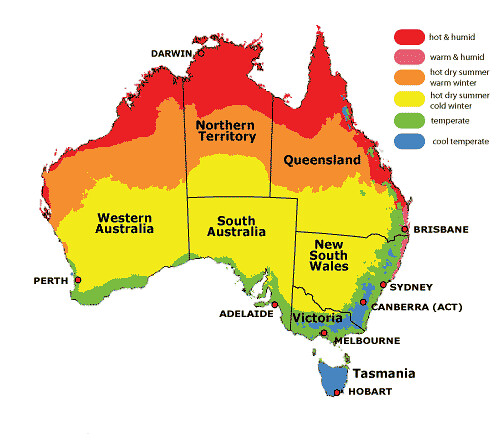
Children’s Incursions & Excursions: So Many Tech Options
In today’s rapidly evolving world, the landscape of education for children is continually transforming, embracing technological advancements to enhance learning experiences. Gone are the days of traditional field trips; instead, educators and parents are exploring the vast realm of tech and robotics to provide children with immersive and engaging incursions and excursions. This article explores the myriad options available, highlighting the benefits and considerations when incorporating technology and robotics into children’s educational adventures.
1. Virtual Reality (VR) Expeditions:
One of the most revolutionary technologies in education is Virtual Reality (VR). VR expeditions allow children to embark on virtual journeys to historical landmarks, outer space, or even the microscopic world. These immersive experiences not only captivate young minds but also provide a safe and controlled environment for exploration, eliminating geographical constraints and associated costs.
2. Augmented Reality (AR) Scavenger Hunts:
Augmented Reality transforms the physical world by overlaying digital information. Imagine a scavenger hunt where children use AR-enabled devices to discover hidden treasures, historical facts, or even solve educational puzzles. AR scavenger hunts turn mundane excursions into thrilling adventures, fostering teamwork and critical thinking skills.
3. Coding Workshops and Robotics Labs:
Introducing children to the world of coding and robotics at an early age sparks creativity and problem-solving skills. Organizing coding workshops and robotics labs as part of incursions allows kids to get hands-on experience in programming and building robots. While these workshops sometimes happen in external classrooms as incursions, technology works best with educators coming into the location where kids feel most comfortable. These activities not only stimulate logical thinking but also encourage an interest in STEM (Science, Technology, Engineering, and Mathematics) fields.
4. Interactive Museum Exhibits:
Traditional museum visits can be transformed with interactive exhibits powered by technology. Touchscreens, audio guides, and interactive displays provide a dynamic learning experience. Children can engage with history, science, and art in a way that goes beyond reading placards, making the educational journey more captivating and memorable.
5. Nature Exploration with Drones:
Taking children on excursions into nature becomes more exhilarating with the use of drones. Drones provide a bird’s-eye view of landscapes, allowing kids to explore areas that may be inaccessible on foot. This technology not only adds an element of adventure but also promotes environmental awareness and appreciation for the world around them.
6. Gamified Learning Platforms:
Incorporating gamification into educational excursions can make learning more enjoyable. Gamified learning platforms use interactive games to teach various subjects. Kids learn together in excitement and the benefits of team experiences are huge when collective consciousness merges as one. Whether exploring history through a time-travel game or learning geography through virtual exploration, these platforms engage children while reinforcing educational concepts.
Benefits of Tech-Infused Incursions and Excursions:
a. Enhanced Engagement: Technology captures children’s attention and curiosity, making the learning process more engaging and enjoyable.
b. Accessibility: Virtual experiences and online resources break down geographical barriers, providing access to educational content regardless of location.
c. Real-world Application: Hands-on experiences with coding, robotics, and other technologies allow children to apply theoretical knowledge in practical settings, preparing them for the future.
d. Customization: Tech-infused activities can be tailored to individual learning styles, ensuring that each child’s unique needs are met.
Considerations for Implementation:
a. Age Appropriateness: Choose technologies and activities that align with the age and developmental stage of the children involved.
b. Supervision: Adequate adult supervision is crucial to ensure the safety and well-being of children, especially when using advanced technologies.
c. Balancing Screen Time: While technology is beneficial, it’s essential to strike a balance and avoid excessive screen time. Incorporate a mix of digital and hands-on activities.
d. Inclusive Approach: Ensure that tech-infused incursions and excursions are inclusive, considering the diverse needs and abilities of all children involved.
Navigating the Technological Frontier: Enhancing Children’s Incursions & Excursions with Tech & Robotics
Incorporating technology and robotics into children’s incursions and excursions opens up a world of possibilities, offering immersive and enriching learning experiences. From virtual reality adventures to coding workshops, these innovative approaches not only make education more exciting but also prepare children for the increasingly tech-driven future. As educators and parents navigate this technological frontier, it’s essential to strike a balance, ensuring that the benefits of technology are harnessed while considering the unique needs of each child. Through thoughtful integration, we can transform educational excursions into unforgettable journeys of discovery and learning.

Holistic Dentistry: Are Your Teeth Part of Your Soul?
Holistic dentists recognize the mouth can offer insights into one’s lifestyle, nutrition, stress levels and overall medical status. Issues like gum disease or tooth decay may indicate imbalances elsewhere
Your Mouth as a Window to Wellness
The mouth can reveal much about our overall health and lifestyle. Subtle clues in the gums, teeth and tongue may indicate issues occurring elsewhere in the body. For instance, receding gums or gum disease could suggest the presence of underlying conditions like diabetes or nutritional deficiencies. Research has found links between periodontitis and health problems involving the cardiovascular, respiratory and reproductive systems. When a dentist elucidates their higher values of caring for the whole patient, not just their teeth, it’s clear this philosophy views oral health as intrinsically tied to general well-being.
Similarly, signs of excessive tooth decay or enamel erosion may point to dietary habits or digestive issues negatively impacting oral and total well-being. Enamel acts as a natural protector for the teeth, so damage signals past or ongoing lack of protective factors. Even characteristics of the tongue can provide hints about one’s general wellness – an abnormal color, texture or coating may correlate with specific health imbalances.
By serving as a “window” displaying subtle changes, the mouth acts as an early warning system alerting us to potential problems developing internally. A holistic dentist can evaluate the current state of a patient’s oral cavity and glean valuable clues to better understand their whole-body condition and risk factors. Addressing any underlying concerns suggested by the mouth becomes crucial for improving and maintaining health in both the oral region and beyond.
Connections to Overall Health
Holistic dentists view oral health as intrinsically linked to whole-body wellness. They understand that issues occurring within the mouth are often connected to challenges elsewhere in the body. By taking a comprehensive, integrated approach focused on the whole individual, holistic dentists aim to support patients’ oral health as well as general well-being. Their goal is long-term healing achieved through gentle, preventative care that minimizes trauma while respecting mind-body relationships.
By addressing root causes rather than just symptoms, holistic dentistry recognizes factors like lifestyle, stress levels and nutrition play a key role in oral and systemic balance. This integrated philosophy sees the mouth, teeth and gums as inextricable from one’s total health status. When oral cavity issues are resolved with an awareness of their potential physical, mental or emotional contributors, holistic care strives to benefit clients by optimizing wellness in body, mind and spirit.
Holistic Philosophy in Action
Being gentle and soft with patients is a virtue holistic dentists uphold. Rather than just fillings or extractions, holistic dentists may provide dietary and lifestyle counseling alongside treatments. Preferring non-toxic materials, they focus on conservation and air abrasion. Importance is placed on education empowering self-care. Some collaborate with other providers to aid patients’ wellness goals.
Potential Benefits of Holistic
Dentistry While still alternative to mainstream practices, research increasingly associates holistic principles with benefits like reduced risks from non-metal fillings or minimized stress and faster healing from gentle techniques. For those suspecting oral issues relate to overall imbalance, holistic care could offer valuable insight.
Final Remarks
Holistic dentistry’s philosophy of healing the whole person through education, prevention, and addressing root causes honors mind-body-spirit connections.
Ceiling Fan Installation vs Air Conditioning: Which Is Best?

It’s the age-old debate dividing families and causing drama. No, we’re not talking about controlling the TV remote, but ceiling fan installation vs air conditioning which is best? Money-conscious homeowners ponder the question every summer as the mercury exceeds 30°C across Australia. Is the extra cost of air conditioning worth the comfort, or are ceiling fans adequate?
Unfortunately, there’s no universal approach to this. On the bright side, however, a bit of research should guide you in the right direction as to which is the better choice for your family and your budget. Who knows, you might even strike a winning balance between both ceiling fans and air conditioners. Let us go over the pros and cons of both, and find out which works best in your house.
Fan vs AC Case & Cost
The major factor for everyone is the fan vs. AC cost. Some questions that keep arising how much does a fan cost? What is the cost to run a fan all day? Is running an air conditioner expensive?
The cost of running a fan vs air conditioner in a mild yet humid city like Sydney, ceiling fan installation is preferred is something that comprises a lot of variables. It includes initial cost, operating and maintenance cost. So let’s have a look:
1. The Case & Cost For Air Conditioners
- From the old window-rattler kind to a ducted unit, to a portable one, to a modern split system one, and to the more exotic evaporative kinds, modern air conditioners have been in our lives for around 100 years. Once installed, air conditioners are a great way to keep cool while sinking back a beer on a Sunday afternoon watching test cricket.
- During a heatwave, you will probably notice hermit-like behaviour on your behalf, coming out of your chilled room only for snacks, drinks, and toilet breaks. It doesn’t have to be like this though. While this scene is common for window and split system air conditioner users – where effectively only one room is chilled – ducted air conditioners can cool a whole house, and some have ‘zoning’ capabilities where you can make one room cooler than the other. This works especially well for apartment buildings, and chances are in an apartment you already have ducted air conditioning. For the maximum chill factor, you simply cannot beat an air conditioner on a scorching summer’s day.
- The main drawback with air conditioning is the cost. The costs of the unit price, installation, and power usage. As broken down in this article, you can expect the humble split system air conditioner to cost around 33c-40c an hour. Say you run it eight hours a day, you could expect that unit to cost nearly $100 in power alone! Installation by a licensed technician, maintenance costs, and unit costs also add up here.
- Ducted is yet more extreme, running anywhere from $1.48 to $1.94 an hour. Though ducted systems are most commonly found in apartments, and apartments are usually part of an embedded electricity network to get a better deal on power. Being that split systems can run anywhere from $500-$2,000+ in price, and ducted systems into the tens of thousands, you might find you blow your cool over the cost. With air conditioning, you’ll have to weigh up whether the cost to benefit ratio is worth it.
2. The Case & Cost For Ceiling Fans
- The humble ceiling fan where would we be without it? Sweating profusely, probably. Ceiling fans are a staple in many Australian homes, and for good reason. Their fuss-free operations that whisk hot air up and cool air down are beloved by Aussies in summer, and fans are such a staple that many people don’t pay any attention to them. A common sight in the north of Australia is to have airy, open houses with more fans than you can poke a stick at operating at all hours of the day.
- Though, there are fairly prominent shortfalls of using ceiling fans. The most obvious is that they don’t cool the environment; they just push cool air around, which can eventually wick your sweat away. It’s no surprise that when you enter a fanned room, you don’t feel the chilled presence like with an air conditioner.
- Another shortfall of the ceiling is the obvious risk of blades swirling above your head. If your roof is rather short, then stretching your hands above your head can be a perilous task. Getting your fingers whacked in a fan isn’t a great feeling. Furthermore, some fans are just downright noisy! Some fans on their maximum level feel like your whole house is about to take off! Air cons on the other hand usually hum away in a dull monotone or with no noise at all. The main drawbacks of ceiling fans are pretty stated; is that enough to make you not a fan of ceiling fans?
- On the plus side, the main benefit of ceiling fans is their supremely low cost to run. They can cost as little as 2c per hour to run, which makes them an obvious choice from a cost perspective. This allows you to run them for longer, and at less cost than an air conditioner. A ceiling fan can cost 20 times less to run than a split system air conditioner but is the sacrifice of a completely chilled room or house worth it.
Pros & Cons Using Fans vs AC
If you’re still confuddled, we’re starting to see electricians using social media such as TikTok for marketing then taking a quick look at the benefits and drawbacks of each cooling method can be particularly helpful.
Ceiling Fans Pros
- Cheaper to run than air conditioning
- Uses only about 65 watts per hour
- Doesn’t require maintenance, and is unlikely to break or malfunction
- Efficient in more open spaces
- Doesn’t dry out the air
Ceiling Fans Cons
- Don’t actually cool space, rather push air around the room, which then indirectly cools your body
- You basically need to stand directly under a fan to feel its full benefit
- Limited temperature control
- Generally doesn’t have the power to reach every corner of the room
Air Conditioners Pros
- Very effective at cooling spaces
- Actually cools a space rather than indirectly cooling your body
- The effects of AC are felt much quicker
- Can be set to maintain a specific temperature
- Reverse cycle units can also keep you warm in winter
Air Conditioners Cons
- More expensive option in terms of running cost
- Can use as much as 2,200 watts per hour
- Require regular maintenance in order to keep the filters clean and functioning
- Can break, and will most likely be expensive to fix
- Can dry out the air being conditioned, which can have adverse health effects
- Inefficient in open spaces
Conclusion
A more efficient way to simultaneously achieve energy-saving and cooling is to use both air conditioners and fan together. Because of the cooling effect of the fan, you can set your AC at a temperature a few degrees higher than usual. Instead of the typical 74 degrees, you can have your AC at 78 degrees and still feel comfortable. For each degree raised on the AC thermostat, there is a 1% reduction in energy used. By increasing the temperature to 78 degrees from 74 degrees, the energy bill can come down from $400 per month to $384 per month. This is the ideal way you can get the best of both worlds!
Australian Outback Summers: Sensationally Sunny

The Australian Outback Summers is huge and spans several climate zones. Most people think of arid regions (deserts) when they think about the Australian Outback and the best time to visit. Arid or semi-arid means an area receives less than 500 mm of rainfall a year. The arid zone makes up 70% of the Australian continent.
Australian Outback Summers Is Huge
The climate across this arid 70 % of Australia is not consistent. Let me say it again the Australian Outback is huge. Even though a lot of Australia is classified as desert the temperatures and amounts of rainfall vary greatly. And not just that, different parts of Australia receive their rain at different times of the year, and they also have different seasons.
There are the wet and dry tropics of the northern Australian Outback, a different Outback climate again. The hottest and driest tours of outback Australia most people consider to be the best time to travel to Australia is NOT the best time to visit the Outback. You’ll probably have to compromise somewhere. I will give you an overview of the climate regions so you get a general idea of what the weather in different parts of the Australian Outback is like at different times of the year.
You can find more detailed climate information in other parts of this website, where I talk about specific places and attractions. For example, I explain in detail what is the best time to visit Ayers Rock/Alice Springs or the best time to visit Kakadu.

The arid regions are the areas identified as the zones with hot dry summers, covering most of inland Australia. As you can see there are two arid Outback climate zones, one with warm or mild winters and one with cool winters. In the southernmost regions, the winters are seriously cold.
Both zones are best visited during the Australian winter that’s when it’s summer in Europe or the US. The Outback climate is such that during winter warm, dry, and sunny days are virtually guaranteed.
Ayers Rock & Alice Springs Are Zone Cool Winters Or Hot?
Ayers Rock & Alice Springs days will be warm, even hot, but the nights will be cold! That’s because you are in a desert. The desert climate is characterised by extremes, hot days, and freezing nights. So if you plan any camping make sure your sleeping bag is a warm one. July is usually the coldest month, and frosts occur about half of the nights in July and August.
Autumn and spring are a good time, too, but as you get closer to the summer months it gets hot. If you travel in these areas in summer you best schedule any activities for the very early mornings. And always, always take a water bottle with you.
I can’t emphasize this enough but drink a lot of water, not sweet sodas. Drinking enough water is the single most important thing you can do to feel well in higher temperatures! It makes all the difference.
South Australian Outback Climate
Having said that, the further south you go the more bearable the temperatures will be, even in summer. Everybody feels different about heat, and we would never venture too far south in winter.
One more thing, social media marketing involving iconic imagery the driving distances in Outback Australia is huge and if you are driving you will spend a lot of time in your vehicle. If you want to drive through Outback Australia in summer do yourself a favour and make sure the car has air conditioning.
If you plan to get off the beaten track you may want to avoid the summer months in the northern parts. Rain at this time of the year is unpredictable. It may not rain for years, but if it rains it pours. Unsealed roads and any roads off the beaten track that are unsealed can become impassable for days or weeks. At least make sure you keep a very close eye on the weather forecasts.
Northern Australia Outback Climate
Most of Northern Australia is considered to be Outback, the climate here is tropical though. Not what you usually associate with the Australian Outback. The northern Australian Outback has a distinct dry and wet season. The dry season from April/May to September/October is considered to be the best time to visit. It certainly is the most comfortable time. The day temperatures are pleasant and the nights are mild. The beginning and end of the dry can be a little hot and humid. On the plus side, there are fewer tourists and lower prices.
The wet season is hot and humid. Thunderstorms are frequent during the first half, and cyclones and extended flooding are a threat in the second half. November, the build-up for the monsoon, is probably the worst time with the highest temperatures and little or no cooling rains.
The wet is not a good time for the average tourist, but if you are adventurous, can handle the heat, and are flexible with your schedule you could be in for the experience of a lifetime. This might surprise you, but the Wet is considered by many locals to be the best time of the year in the northern Outback climate.

The Environmental Impact Of That Summer Top
The ‘Summer Sensations’ Team came across this very cool article on the OCC Apparel and they have very kindly agreed for us to share it with our readers.
‘THE ENVIRONMENTAL IMPACT OF PUTTING THAT SHIRT ON YOUR BACK’
The shirt you’re wearing right now: what’s it made from? In its rawest form, was it once growing in a field, on a sheep’s back or sloshing at the bottom of an oil well?
We wear clothes literally every day, but few of us spend much time reflecting on what goes into manufacturing various textiles and their environmental impacts.
This is interesting considering how much we think about the food we eat or the skin care products we use.
Most of us don’t realise how environmentally intensive it is to make a single article of clothing, says fashion sustainability expert Clara Vuletich, whose PhD research focuses on sustainable textiles.
“Textile supply chains are some of the most complex of any manufacturing sector,” she said.
First comes the fibre, which, whether it comes from a plant, animal or crude oil, is almost always an energy and pollutant-intensive process.
The fibre is processed until it can be spun into a yarn, which, in turn, is woven or knitted into a fabric. Somewhere in there bleaches and dyes are usually involved.
Finally, the fabric is made into a garment.
Each of these steps probably happens in different factories, possibly in different countries.
“All of these stages have environmental impact,” Dr Vuletich said.
“And we know that the making of textiles, generally speaking, uses huge amounts of water because all of this yarn has to be constantly washed, it’s going through all these chemical processes to turn it into this high quality, very delicate material, and then it becomes a different colour to what it is naturally.
Apparel and footwear industries currently account for 8 per cent of global greenhouse gas emissions, nearly as much as that of the whole European Union, according to a recent industry report, Measuring Fashion.
By 2030, the climate impact of the apparel industry alone is forecast to nearly match today’s total annual US greenhouse gas emissions, emitting 4.9 gigatonnes of carbon dioxide equivalent.
RMIT textile technologist Mac Fergusson said textiles made in Australia were setting a good example for the rest of the world, and the global industry was making strides to be more environmentally friendly.
“We’ve got a lot of recycling going on that a lot of people don’t realise,” he said, such as a Victorian operation recycling plastic bottles into polyester that would be opening soon.
Because manufacturing processes are so complicated and varied, exactly how much of an environmental effect they impart is difficult to quantify.
But here’s an introduction to what goes into manufacturing some of the fabrics you may have hanging in your wardrobe.
-
Cotton fabric is made from yarn spun from the fibres of the cotton seedpod, called a boll. Most of the world’s cotton is grown in India and China, usually on farms that rely heavily on pesticides, fertilisers and intensive irrigation.
Growing 1 kilogram of non-organic cottonlint (the raw cotton fibre) uses about 2,120 litres of water from irrigation, according to Textile Exchange, a not-for-profit group promoting sustainable practices within the industry.
Cotton is generally harvested by machine, then undergoes ginning, a mechanical process that removes the fibres from their seeds.
These fluffy fibres are then subject to a series of processes, such as carding and combing, to smooth and refine them until they are ready to be spun into yarn. The same process is used for making organic cotton fabric.
A Textile Exchange life cycle analysis published last year found organic cotton — which is usually grown using water-conserving practices and without pesticides and fertilisers — had reduced potential for global warming, acidification, soil erosion, water consumption and non-renewable energy compared with conventional cotton production.
Australia holds a relatively small piece of the global cotton pie, producing about 2 million bales a year compared to China and India’s 33 million and 27 million respectively, but it punches above its weight in the environmental stakes, contributing less than a third of a per cent to the country’s agricultural greenhouse gas emissions, according to Cotton Australia.
A 2014 industry report found Australian cotton had increased its water efficiency by 40 per cent over the previous decade and had reduced insecticide use by 89 per cent since the late 90s.
Life cycles
So, are some fibres better or worse for the environment than others? Should we all completely eschew cotton, for example, because of the water and pesticides growing it uses?
It’s not quite as simple as that, Dr Vuletich pointed out: cotton could be knitted into a jersey t-shirt, which would be washed frequently and perhaps wear out quickly.
Or it could be turned into a finely woven specialty fabric that’s sewn into a kimono jacket to be washed sparingly and carefully maintained.
“We talk about life cycles,” she said.
“You’ve got the impacts of the production phase, but then the material’s made up and the garment is used by the customer, and that has environmental impacts as well.”
Having said that, knowing what goes into manufacturing a textile can help you know what you’re buying. Choosing recycled polyester, local or organic cotton or water-saving fibres like hemp will likely have a lower environmental impact. They also send a message to producers there is a demand for more eco-friendly products.
To make a real environmental difference, Measuring Fashion recommended recycling be combined with a shift to renewable energy, more efficient processes, smarter design and different consumption models — by you, the consumer.
Mr Fergusson said local wool and cotton growers wanted to see more textile manufacturing happen here in Australia, but local energy costs were prohibitive.
“I know that several cotton farmers have looked at the problem but our energy costs are too high. Textile manufacture is not a labour-intensive industry — it is capital intensive,” he said.
Shop sparingly, treasure what you have
If buying clothes with the environment in mind is important to you, it can be tough to know where to shop.
While some brands spruik their environmental credentials, many don’t provide information about how their fabric is sourced.
In fact, Dr Vuletich said, sometimes even the brand did not have much control over the origins of their textiles, especially smaller Australian brands that did not have the economic clout of a big global chain.
“Obviously the big players, it’s easier for them, the H&Ms, they’ve got huge scale,” she said.
“Some of these smaller players just can’t get access to that better material.
Consumers wanting to be informed can use apps like Good On You, which rates brands based on their environmental impact, as well as their labour and animal welfare practices. But such apps rely on brands being transparent about their processes in the first place.
If you’re really trying to limit your wardrobe’s effect on the environment, Dr Vuletich said the best thing you could do was to limit buying new, and to treasure what you have.
“Be conscious. Take care of it and cherish it. Each garment has had this journey,” she said.
“It is really complex but I find it really exciting. Our eyes have been opened to these amazing processes and the amazing materials we have. The new innovations that are opening up that are really exciting.
“I think as consumers we’re ready for it, we’re hungry for it, especially the younger generation.”
Please ethical and sustainable apparel solutions please visit their website here: www.occapparel.com.au
Authorship Acknowledged: Written and first posted by Tegan Taylor

Summer Furniture Ideas in 2018
Summer is a season of cool ideas for warm nights and hot days. You want to be able to enjoy the heat when you want to and have the opportunity to chill out, when you need to. Your furniture should reflect those principles to allow you to take advantage of our great Australian summers. I think of beach houses and lazy days by the water with family. Reading books on beach towels spread out under the sun. Kids splashing about in the water. Retreating inside when the heat of the day reaches it apogee.
Summer Furniture Ideas in 2018
You want to ensure that your summer furniture ideas in 2018, are in place by the time you come to putting your feet up inside your domestic abode. Sydney is one of the truly great places to enjoy an Australian summer. The beaches with golden sands on its northern shores are idyllic for family frolicking amid salt water swims and sunbathing. Upon arrival, back in the family home or beach shack, you want to have light and airy furniture to reflect your cool intentions. Relaxed casual dining areas with tables and chairs to match. Block tables in Pine and Tasmanian Oak combine the coolness of wood with an understated elegance suited to any occasion.
Lounge areas love timber in summer, because it speaks a cool language to inhabitants seeking refuge from the heat. Coffee tables in pine and oak can unlock some Zen style magic in your living room. A touch of class in the right places speaks volumes, with handmade furniture setting the tone for cool relaxation. In the digital age, the entertainment unit has taken on an enlarged role in most family homes. Combining age-old beautiful timber housing state of the art technology, shields your home from the crassness of too much modern. Discover the elegance of depth, with Asian inspired timber units.
The bedrooms become very important in the summer months. Transitioning from our waking hours to sleep can be challenging on those hot nights and cool furniture can make a difference. Looking around you, whilst horizontal and awaiting the sandman, it is soothing to see clean lines and Zen bedroom furniture. Every self-respecting pirate had a chest, and today’s natural timber storage boxes have that aura. Set sea on an ocean of summer snooze with cool furniture ideas in wood in 2018. Are you prepared for summer this season at home?

Sensational Software Solutions Starring this Summer
The hits and happy times are coalescing around intranet solutions this summer, with Microsoft’s SharePoint continuing to evolve into something amazing. This web based collaborative platform is taking communication between stake holders within organisations to a whole new level. It is much more than a document management and storage system today, it is, quite simply, making business a whole lot easier and flexible in the twenty first century. SharePoint is the most configurable and adaptable product on the market today. It becomes unique in its uses for every organisation that utilises it; and solves problems in an amazing variety of ways.
Sensational Software Solutions Starring this Summer
SharePoint , as of 2017, has 190 million users across, some, 200 hundred thousand organisations. If you are not using SharePoint, you have to ask yourself, am I missing out on something very special? Intranet and social network solutions revolve around this portal, which centralises all access to an organisation’s information and applications. Share securely essential information and control engagement and process management to the advantage of your group. Speed up and gain efficiencies with staffing, especially on-boarding new staff. Intranet advances are changing the way we do business in 2017 and beyond.
Enterprise and document management remains the core business, but SharePoint has spread its wings in many new directions this summer. Its integrative abilities, with all of Microsoft’s’ Windows and Office products, makes it the bee’s knees, when it comes to collaborative real-time editing and encrypted information management. Collaboration is the name of the game, when it comes to SharePoint’s sensational software solutions starring this summer. Catch the biggest wave of the season this year and enjoy your own cloud and lots of new applications.
The most exciting single thing about SharePoint is that it never stops evolving for a second. Once you have joined the party, your summer will never end, and success seems only natural after that. Application programming interfaces continue to open the universe up to your organisation. This is your interface with every new development that Microsoft are working on and will work on in the future. Never miss the bus again in the digital age; and keep your cutting-edge sharp, so that you can compete for business now and into the future. Farms, Web Applications, Site Collections and Service Applications all brought in-house under the SharePoint banner. If you have not properly explored a sensational software solution this summer, make it SharePoint.
